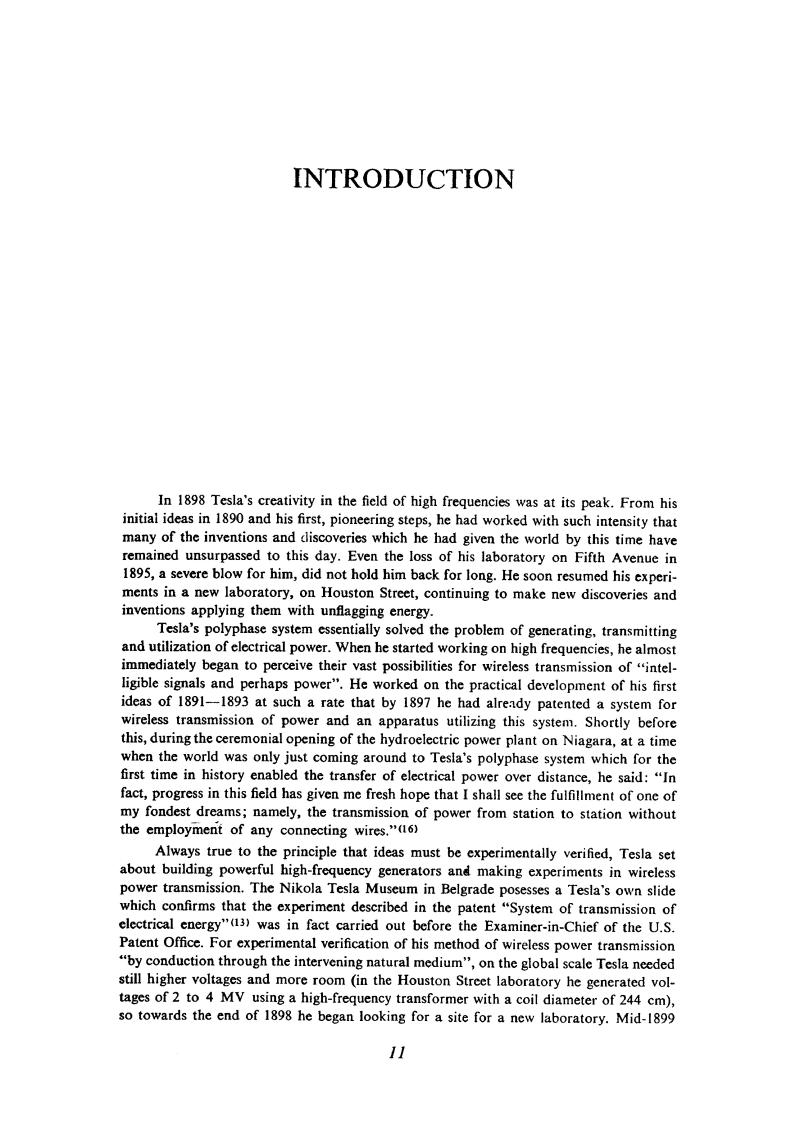
Nikola Tesla Books
INTRODUCTION
In 1898 Tesla's creativity in the field of high frequencies was at its peak. From his initial ideas in 1890 and his first, pioneering steps, he had worked with such intensity that many of the inventions and discoveries which he had given the world by this time have remained unsurpassed to this day. Even the loss of his laboratory on Fifth Avenue in 1895, a severe blow for him, did not hold him back for long. He soon resumed his experiments in a new laboratory, on Houston Street, continuing to make new discoveries and inventions applying them with unflagging energy.
Tesla's polyphase system essentially solved the problem of generating, transmitting and utilization of electrical power. When he started working on high frequencies, he almost immediately began to perceive their vast possibilities for wireless transmission of âintelligible signals and perhaps powerâ. He worked on the practical development of his first ideas of 1891 - 1893 at such a rate that by 1897 he had already patented a system for wireless transmission of power and an apparatus utilizing this system. Shortly before this, during the ceremonial opening of the hydroelectric power plant on Niagara, at a time when the world was only just coming around to Tesla's polyphase system which for the first time in history enabled the transfer of electrical power over distance, he said: âIn fact, progress in this field has given me fresh hope that I shall see the fulfillment of one of my fondest dreams; namely, the transmission of power from station to station without the employment of any connecting wires.â(16)
Always true to the principle that ideas must be experimentally verified, Tesla set about building powerful high-frequency generators and making experiments in wireless power transmission. The Nikola Tesla Museum in Belgrade posesses a Tesla's own slide which confirms that the experiment described in the patent âSystem of transmission of electrical energyâ(13) was in fact carried out before the Examiner-in-Chief of the U.S. Patent Office. For experimental verification of his method of wireless power transmission âby conduction through the intervening natural mediumâ, on the global scale Tesla needed still higher voltages and more room (in the Houston Street laboratory he generated voltages of 2 to 4 MV using a high-frequency transformer with a coil diameter of 244 cm), so towards the end of 1898 he began looking for a site for a new laboratory. Mid-1899
11
Tesla N. âSystem of transmission of electrical energyâ, U.S. Patent 645 576, March 20, 1900, Appl. Sept. 2, 1897.
Tesla: âOn electricityâ, EL Rev. Jan. 27, 1897, A-101.

